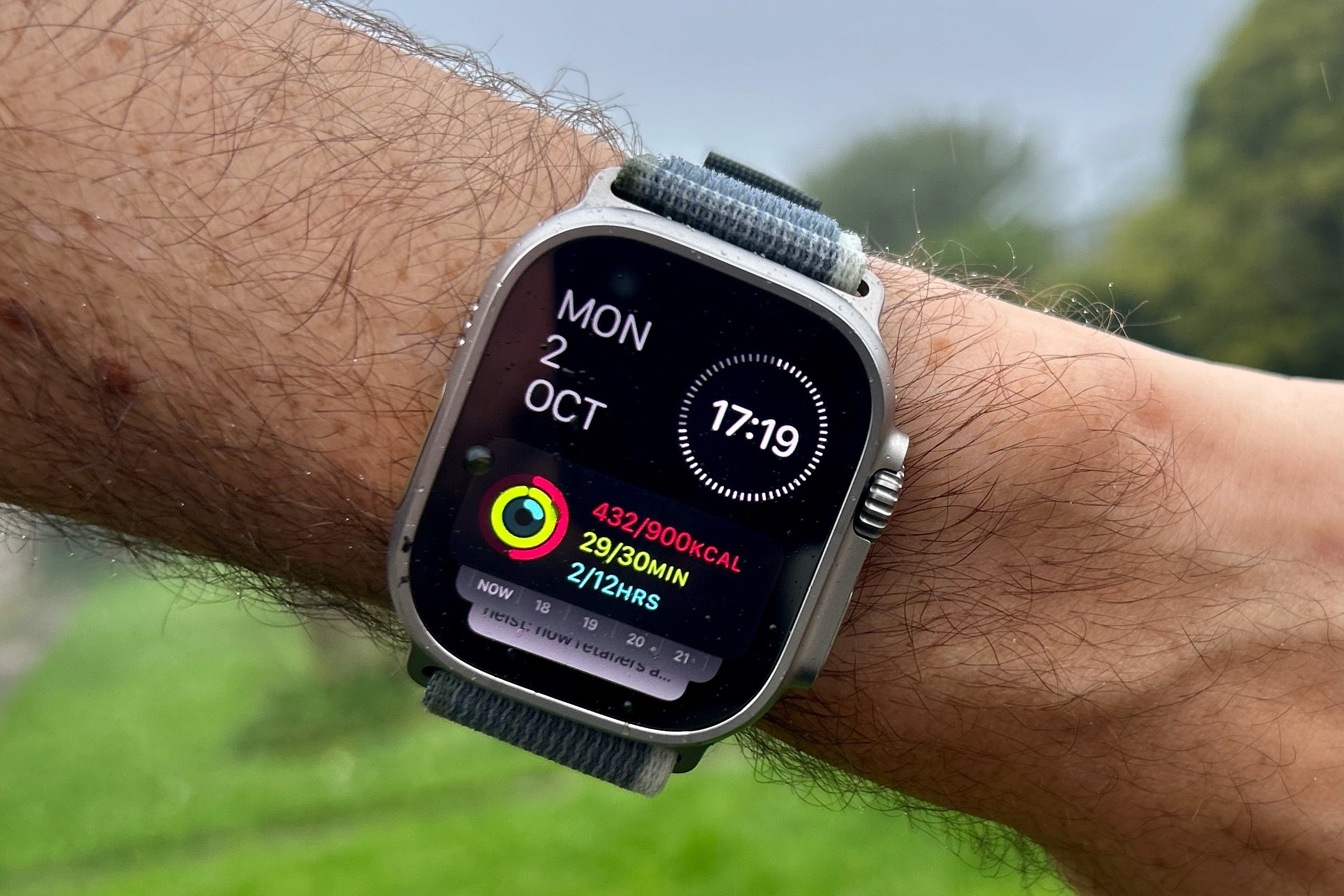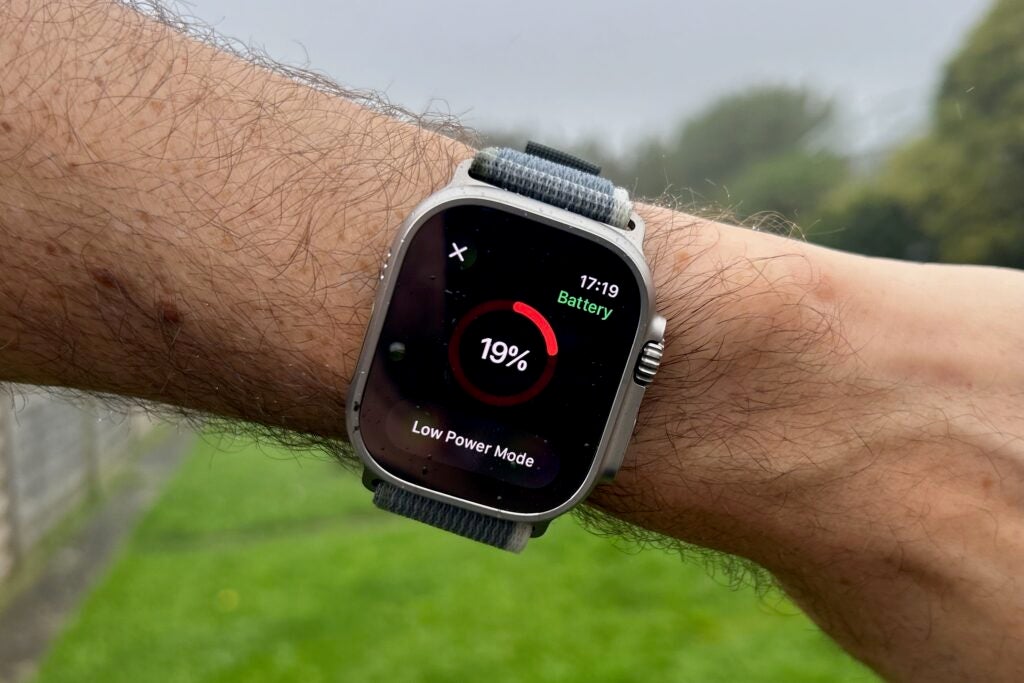Garmin recently launched its Fenix 8 series which is less focused on ultra-endurance athletes, like the Enduro 3 smartwatch, and instead promises to offer something for everyone.
With its premium price tag, the Fenix 8 series is much more expensive than recent launches such as the Google Pixel Watch 3, but how does it compare to Apple’s premium smartwatch the Watch Ultra 2?
We’ve compared the specs of the Garmin Fenix 8 series to last year’s Apple Watch Ultra 2, so you can decide which smartwatch might be better suited for you.
| Garmin Fenix 8 | Apple Watch Ultra 2 | |
| UK RRP | £869.99 | £799 |
| USA RRP | $999.99 | $799 |
| Battery life (GPS Mode) | Up to 95 days (149 with solar) | N/A |
| Battery life (Smartwatch Mode) | Up to 30 days (48 with solar) | Up to 36 hours (72 hours in Low Power Mode) |
| Screen Size | 43, 47 or 51mm | 49mm |
| Waterproof | 10ATM | 10ATM and IPX8 |
| Size (Dimensions) | 47 x 47 x 13.8 mm (47mm version) | 49 x 44 x 14.4mm |
| Weight | 64g or 74g | 59g |
| Release date | 2024 | 2023 |
| GPS | Yes | Yes |
Price
The Garmin Fenix 8 has a starting RRP of £869.99/$999.99 for the 43mm model with an AMOLED screen. This price rises according to the desired size of the smartwatch and whether you opt for an AMOLED or solar charging display, with the most expensive offering being the 51mm-sized, solar model which is £1039.99/$1199.99
Click here to buy the Garmin Fenix 8
The Apple Watch Ultra 2 has a cheaper RRP of £799/$799 and, unlike the Garmin Fenix 8, comes in just one 49mm size option.
The Garmin Fenix 8 has AMOLED or solar always-on displays
As mentioned earlier, the Fenix 8 series has two different display options for you to choose from. There’s the AMOLED screen which is available in three sizes: 43mm, 47mm and 51mm, and the solar screen which comes in just two sizes: 47mm and 51mm.
While the AMOLED promises to be a bright screen with improved graphics from its predecessor, the solar option is an always-on display with a solar charging lens that allows you to extend your battery life when you’re outside. While both offer impressive battery life, the solar option can last for up to 48 days whereas the AMOLED offers up to 29 days of power.
The Apple Watch Ultra 2 doesn’t have a solar-charging option, so needs to be recharged either via mains or through wireless charging. However, it does have an Always-On Retina display which can reach up to a whopping 3000 nits at its peak.

The Garmin Fenix 8 is compatible with Android smartphones
This could arguably be the biggest deciding factor between the two smartwatches. While the Garmin Fenix 8 series is compatible with both iPhones and Androids, the Apple Watch Ultra 2 only works with the iPhone XS or later models that run on iOS 17 or later.
If you’re already in the Apple ecosystem then most of your favourite Apple tools will be synced directly across all your devices, including the Apple Watch Ultra 2. This includes Siri, access to the App Store and Find My connectivity, which allows you to locate any misplaced Apple devices. You can also sync and access your most-used iOS apps, such as Calendar, Mail and Weather from your Watch Ultra 2.
Otherwise, the Fenix 8 uses Connect IQ, Garmin’s own app store through which you can download apps, watch faces and widgets onto your smartwatch. Much like the Apple Watch Ultra, Fenix 8 users can access their calendar and check the weather. Plus, they’ll receive a Morning Report.
Similar to Google’s Morning Brief, the Morning Report shows a rundown of how well you’ve slept and displays your readiness score, a feature missing from the Apple Watch Ultra 2.
Both have preloaded workouts and activities
Naturally as smartwatches, both the Fenix 8 series and Apple Watch Ultra 2 come with numerous activity profiles and workouts for users to take part in and track their progress and vital stats while doing so.
The Fenix 8 series has a 10ATM water resistance rating, while the Watch Ultra 2 has a rating of 100 metres under ISO standard 22810. This means that both wearables offer the ability to track your metrics while swimming and even when recreationally scuba diving.
The Apple Watch Ultra 2 includes a depth gauge and functionality required by scuba and freedivers for descents down to 40 metres. It’s even EN13319 certified, which is an internationally recognised standard for diving accessories. The Fenix 8 series is also 40-metre dive-rated and offers features for both scuba and apnea dive activities.


The Apple Watch Ultra 2 has a gestures feature
The Apple Watch Ultra 2 has a double tap gesture which allows users to control their smartwatch without touching the display. All they need to do is tap the index finger and thumb of their watch-wearing hand together.
The double tap gesture can be used for various shortcuts including stopping a timer, controlling music, answering phone calls and even taking a photo. It’s enabled by the Apple Watch Ultra 2’s neural engine which uses data collected from various on-device sensors to detect when the gesture is made.
The Garmin Fenix 8 has a longer battery life
The Fenix 8 series boasts an impressive battery life, though the solar model does offer more days of use. Garmin claims the 51mm AMOLED model can offer up to 29-days of battery when in smartwatch mode while the 51mm solar model with always-on display offers up to a massive 48-days.
The Apple Watch Ultra 2 falls short in this area compared to the Garmin. The smartwatch offers up to 36 hours during normal use or up to 72 hours when Low Power Mode is switched on.


Early Verdict
If you’re firmly cemented in the Apple ecosystem, then it’s understandable that you’d want to opt for the Apple Watch Ultra 2 as all your data, from health and fitness stats from the watch to your appointments in Calendar can be synced seamlessly across all your Apple devices.
However, if you’re an Android user or you just want a smartwatch that has the ability to last for weeks rather than days, then the Garmin Fenix 8 series might be the better-suited option. That said, we haven’t reviewed Garmin’s claims ourselves yet so be aware that our verdict is based on the specs and information Garmin has shared as of publishing this comparison.











